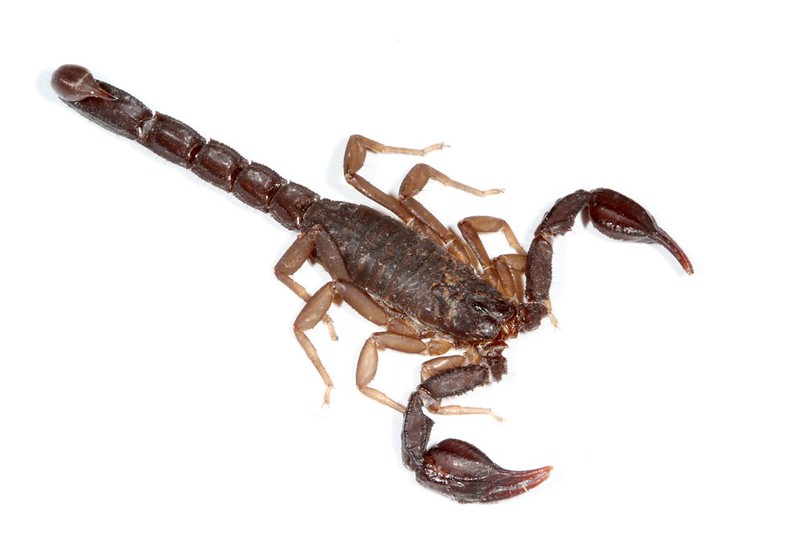By Destry Greenway
As someone growing up in West Texas, I was lucky that I had opportunities to explore. Grandparents on both sides of the family lived on properties with an abundance of dilapidated sheds, barns, and caved-in cellars that provided endless hours of pleasure to a curious and sometimes foolhardy young boy. As would be expected, this young boy suffered numerous stings from yellowjackets and bumblebees who didn’t appreciate being disturbed by someone rummaging around on their turf.
However, there is one animal that I’ve had the good fortune to have never been stung, the scorpion.

by Charles & Clint
Scorpions are related to spiders, ticks, and mites. They come in different sizes and colors, but all have the characteristic appearance of four pairs of legs, with a pair of pincers at the front, a relatively flat body and a segmented tail with a bulbous stinger at the end.
They eat insects, spiders, centipedes, and other creepy-crawlies. Scorpions themselves are eaten by small mammals, large centipedes, lizards, tarantulas, and some birds. Although associated with dry areas such as deserts, they are highly adaptable to other habitats including grasslands, high elevation mountains, and forests. Unlike many other arthropods, scorpions live a relatively long time; up to seven years in some species.
World-wide, there are an estimated 2,500 species and they occur on all continents except Antarctica. However, only about 25 species are considered to be deadly to humans. Precise figures are hard to come by, but roughly 3,000 deaths occur each year, with more fatalities in Mexico than any other country. In the United States, as of 2021, only four deaths in 11 years have been reported.
About 90 species are found in this country, with 18 found in Texas. The greatest diversity of species occurs in West Texas, especially the Big Bend area. In the Abilene area, the striped bark scorpion is the one most likely encountered. It is the only one found throughout the entire state, even in the pineywoods. One to three inches long, it ranges from a yellowish-tan to brown color, with two dark stripes running lengthwise along the body.
Although the sting is painful, it isn’t deadly, unless an allergic reaction occurs. I have been told everything from “not as bad as a wasp sting” to “many times worse.” Suffice it to say, it’s not a pleasant experience. First aid for a sting is essentially the same as for other insect stings; although the discomfort and swelling may last much longer.
Which brings us to the main reason, I have such a fear of them. They can be found in the home. More than once in my life, I have observed scorpions scuttling across the living room floor, crawling from underneath a pair of shoes, and in a couple of cases, have discovered them in my bed when the sheets were turned back. Granted, most of the sightings occurred when my family lived in a porous, wood-framed house that was built in 1927. Since I moved to Abilene in 2014, I’ve seen none in the house, but that doesn’t mean it can’t happen.
The most effective control is good housekeeping around the outside of the home. Piles of firewood, old lumber, bricks, and other common debris are favorite hiding places. Keep the exterior walls free of piles of trash and cut back tree limbs near the roof. Extended hot and dry weather also causes scorpions to seek the indoors, so be particularly alert at such times.
Some people keep scorpions as pets. Probably not the best idea!
If you want to observe scorpions in their natural environment, go to the places mentioned above in the first paragraph (dilapidated buildings) at night. But don’t touch them, and let them be. An ultra-violet or black light flashlight will cause them to glow in the dark. Just be careful, and Happy Hunting!


